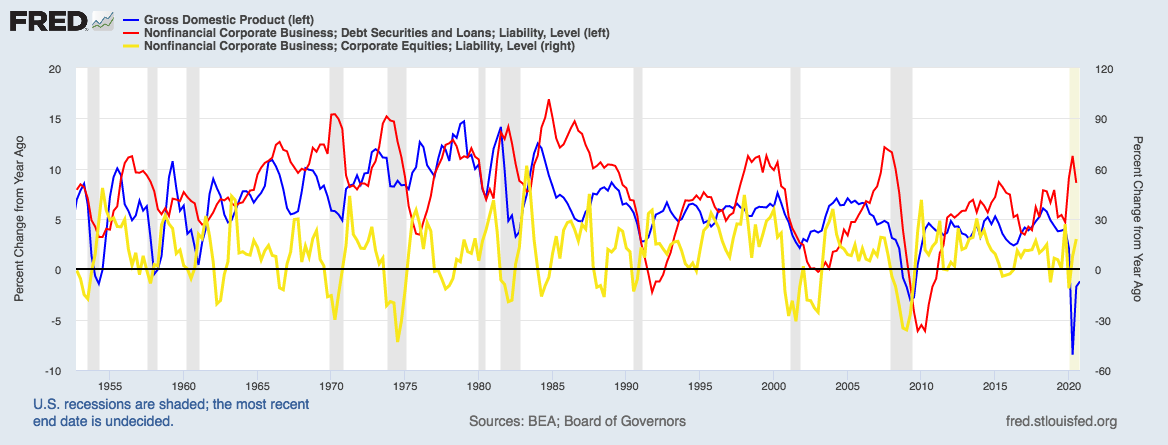|
Trade Weighted Index
The trade-weighted effective exchange rate index, a common form of the effective exchange rate index, is a multilateral exchange rate index. It is compiled as a weighted average of exchange rates of ''home'' versus ''foreign'' currencies, with the weight for each ''foreign'' country equal to its share in trade. Depending on the purpose for which it is used, it can be export-weighted, import-weighted, or total-external trade weighted. Overview The trade-weighted effective exchange rate index is an economic indicator for comparing the exchange rate of a country against those of their major trading partners. By design, movements in the currencies of those trading partners with a greater share in an economy's exports and imports will have a greater effect on the effective exchange rate. In a multilateral, highly globalized, world, the effective exchange rate index is much more useful than a bilateral exchange rate, such as that between the Australian dollar and the United States dolla ... [...More Info...] [...Related Items...] OR: [Wikipedia] [Google] [Baidu] |
Effective Exchange Rate Index
The effective exchange rate index describes the strength of a currency relative to a basket of other currencies. Although typically the basket is trade weighted, there are others besides the trade-weighted effective exchange rate index. Ho (2012) proposed a new approach to compiling effective exchange rate indices. Under this approach, the effective exchange rate can be calculated as a ratio of the normalized exchange value of currency against the US dollar to the normalized exchange value of the benchmark currency basket against the US dollar. Normalized exchange rate refers to the current exchange rate divided by the exchange rate against the US dollar in the base year, which effectively scales up the exchange rate of a "small value" currency like the Japanese yen, worth a small fraction of a dollar, and scales down the exchange rate of a "big value" currency like the British pound Sterling (Currency symbol, symbol: Pound sign, £; ISO 4217, currency code: GBP) is the cu ... [...More Info...] [...Related Items...] OR: [Wikipedia] [Google] [Baidu] |
Exchange Rate
In finance, an exchange rate is the rate at which one currency will be exchanged for another currency. Currencies are most commonly national currencies, but may be sub-national as in the case of Hong Kong or supra-national as in the case of the euro. The exchange rate is also regarded as the value of one country's currency in relation to another currency. For example, an Interbank lending market, interbank exchange rate of 141 Japanese yen to the United States dollar means that ¥141 will be exchanged for or that will be exchanged for ¥141. In this case it is said that the price of a dollar in relation to yen is ¥141, or equivalently that the price of a yen in relation to dollars is $1/141. Each country determines the exchange rate regime that will apply to its currency. For example, a currency may be floating exchange rate, floating, fixed exchange rate, pegged (fixed), or a hybrid. Governments can impose certain limits and controls on exchange rates. Countries can als ... [...More Info...] [...Related Items...] OR: [Wikipedia] [Google] [Baidu] |
Australian Dollar
The Australian dollar (currency sign, sign: $; ISO 4217, code: AUD; also abbreviated A$ or sometimes AU$ to distinguish it from other dollar, dollar-denominated currencies; and also referred to as the dollar or Aussie dollar) is the official currency and Legal tender#Australia, legal tender of Australia, including States and territories of Australia, all of its external territories, and three independent sovereign Pacific Islands, Pacific Island states: Kiribati, Nauru, and Tuvalu. * ThMoney Trackersite allows users to track Australian banknotes as they circulate around Australia. Images of historic and modern Australian bank notes* [https://www.rba.gov.au/statistics/historical-data.html?v=2022-09-25-02-11-35#exchange-rates Reserve Bank of Australia – historical data of AUD since 1969 (various .xls files)] The banknotes of Australia {{Authority control 1966 establishments in Australia Articles containing video clips Circulating currencies Currencies int ... [...More Info...] [...Related Items...] OR: [Wikipedia] [Google] [Baidu] |
United States Dollar
The United States dollar (Currency symbol, symbol: Dollar sign, $; ISO 4217, currency code: USD) is the official currency of the United States and International use of the U.S. dollar, several other countries. The Coinage Act of 1792 introduced the U.S. dollar at par with the Spanish dollar, Spanish silver dollar, divided it into 100 cent (currency), cents, and authorized the Mint (facility), minting of coins denominated in dollars and cents. U.S. banknotes are issued in the form of Federal Reserve Notes, popularly called greenbacks due to their predominantly green color. The U.S. dollar was originally defined under a bimetallism, bimetallic standard of (0.7734375 troy ounces) fine silver or, from Coinage Act of 1834, 1834, fine gold, or $20.67 per troy ounce. The Gold Standard Act of 1900 linked the dollar solely to gold. From 1934, its equivalence to gold was revised to $35 per troy ounce. In 1971 all links to gold were repealed. The U.S. dollar became an important intern ... [...More Info...] [...Related Items...] OR: [Wikipedia] [Google] [Baidu] |
Weighted Geometric Mean
In statistics, the weighted geometric mean is a generalization of the geometric mean using the weighted arithmetic mean. Given a sample x=(x_1,x_2\dots,x_n) and weights w=(w_1, w_2,\dots,w_n), it is calculated as: : \bar = \left(\prod_^n x_i^\right)^ = \quad \exp \left( \frac \right) The second form above illustrates that the logarithm of the geometric mean is the weighted arithmetic mean of the logarithms of the individual values. If all the weights are equal, the weighted geometric mean simplifies to the ordinary unweighted geometric mean. References See also *Average *Central tendency *Summary statistics *Weighted arithmetic mean *Weighted harmonic mean In mathematics, the harmonic mean is a kind of average, one of the Pythagorean means. It is the most appropriate average for ratios and rates such as speeds, and is normally only used for positive arguments. The harmonic mean is the reciprocal ... External links Non-Newtonian calculus website Means Mathematical an ... [...More Info...] [...Related Items...] OR: [Wikipedia] [Google] [Baidu] |
Bank For International Settlements
The Bank for International Settlements (BIS) is an international financial institution which is owned by member central banks. Its primary goal is to foster international monetary and financial cooperation while serving as a bank for central banks. With its establishment in 1930 it is the oldest international financial institution. Its initial purpose was to oversee the settlement of World War I war reparations. The BIS carries out its work through its meetings, programmes and through the Basel Process, hosting international groups pursuing global financial stability and facilitating their interaction. It also provides banking services, but only to central banks and other international organizations. The BIS is based in Basel, Switzerland, with representative offices in Hong Kong and Mexico City. History Background International monetary cooperation started to develop tentatively in the course of the 19th century. An early case was a £400,000 loan in gold coins, in 1825 ... [...More Info...] [...Related Items...] OR: [Wikipedia] [Google] [Baidu] |
Euro
The euro (currency symbol, symbol: euro sign, €; ISO 4217, currency code: EUR) is the official currency of 20 of the Member state of the European Union, member states of the European Union. This group of states is officially known as the euro area or, more commonly, the eurozone. The euro is divided into 100 1 euro cent coin, euro cents. The currency is also used officially by the institutions of the European Union, by International status and usage of the euro, four European microstates that are not EU members, the British Overseas Territory of Akrotiri and Dhekelia, as well as unilaterally by Montenegro and Kosovo. Outside Europe, a number of special territories of EU members also use the euro as their currency. The euro is used by 350 million people in Europe and additionally, over 200 million people worldwide use currencies pegged to the euro. It is the second-largest reserve currency as well as the second-most traded currency in the world after the United Sta ... [...More Info...] [...Related Items...] OR: [Wikipedia] [Google] [Baidu] |
European Central Bank
The European Central Bank (ECB) is the central component of the Eurosystem and the European System of Central Banks (ESCB) as well as one of seven institutions of the European Union. It is one of the world's Big Four (banking)#International use, most important central banks with a balance sheet total of around 7 trillion. The Governing Council of the European Central Bank, ECB Governing Council makes monetary policy for the Eurozone and the European Union, administers the foreign exchange reserves of EU member states, engages in foreign exchange operations, and defines the intermediate monetary objectives and key interest rate of the EU. The Executive Board of the European Central Bank, ECB Executive Board enforces the policies and decisions of the Governing Council, and may direct the national central banks when doing so. The ECB has the exclusive right to authorise the issuance of euro banknotes. Member states can issue euro coins, but the volume must be approved by the EC ... [...More Info...] [...Related Items...] OR: [Wikipedia] [Google] [Baidu] |
Index Numbers
In economics, statistics, and finance, an index is a number that measures how a group of related data points—like prices, company performance, productivity, or employment—changes over time to track different aspects of economic health from various sources. Consumer-focused indices include the Consumer Price Index (CPI), which shows how retail prices for goods and services shift in a fixed area, aiding adjustments to salaries, bond interest rates, and tax thresholds for inflation. The cost-of-living index (COLI) compares living expenses over time or across places.Turvey, Ralph. (2004) Consumer Price Index Manual: Theory And Practice.' Page 11. Publisher: International Labour Organization. . ''The Economist''’s Big Mac Index uses a Big Mac’s cost to explore currency values and purchasing power. Market performance indices track trends like company value or employment. Stock market indices include the Dow Jones Industrial Average and S&P 500, which primarily cover U.S. ... [...More Info...] [...Related Items...] OR: [Wikipedia] [Google] [Baidu] |
Economic Indicators
An economic indicator is a statistic about an economic activity. Economic indicators allow analysis of economic performance and predictions of future performance. One application of economic indicators is the study of business cycles. Economic indicators include various indices, earnings reports, and economic summaries: for example, the unemployment rate, quits rate (quit rate in American English), housing starts, consumer price index (a measure for inflation), inverted yield curve, consumer leverage ratio, industrial production, bankruptcies, gross domestic product, broadband internet penetration, retail sales, price index, and changes in credit conditions. The leading business cycle dating committee in the United States of America is the private National Bureau of Economic Research. The Bureau of Labor Statistics is the principal fact-finding agency for the U.S. government in the field of labor economics and statistics. Other producers of economic indicators includes the Unit ... [...More Info...] [...Related Items...] OR: [Wikipedia] [Google] [Baidu] |





